- What is the Ossuary at the Church of St James Known for?
- Here is Why Your Kids Will Find it Interesting
- Historical Context
- Architecture and Structure
- Human Remains
- Comparative Analysis
- Preservation Efforts
- Surrounding Landmarks
- Best Time to Visit
- How Long Does It Take to Attend?
- Is Ossuary at the Church of St James Worth Visiting?
Hidden in the heart of Brno, beneath the historic St James' Church, lies a mysterious underground chamber that captures the imagination and offers a unique glimpse into the past. The Ossuary at the Church of St James is a poignant site where young and old visitors can delve into a place rich with history. As the second largest Ossuary in Europe, this site holds the remains of over 50,000 individuals, each with a story that echoes through the corridors of time.
The Ossuary provides a fascinating detour from the typical tourist path for families seeking a blend of education and intrigue on their vacation. It was discovered relatively recently in 2001 and showcases a remarkable array of historical periods, from plague victims to fallen soldiers. Walking through the cool, vaulted passageways, families can foster discussions on history, life cycles, and remembrance in a setting that respectfully honors the past.
Contents
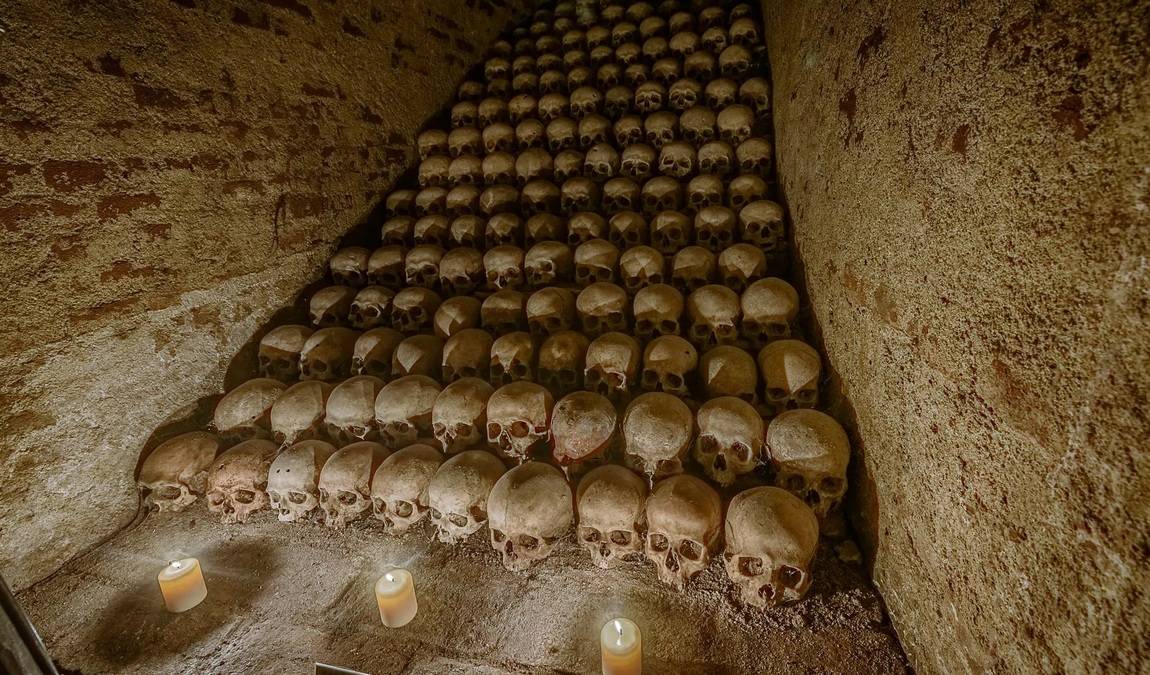 Photo: podzemibrno.cz
Photo: podzemibrno.cz
While an unconventional choice for family travel destinations, the Ossuary's significance and the respect with which it presents its contents offer a respectful window into the history beneath the streets of Brno. This hidden gem is a tangible connector to generations past, giving a compelling story that combines a sense of mystery with a profound historical lesson.
What is the Ossuary at the Church of St James Known for?
The Ossuary at the Church of St James in Brno, Czech Republic, is especially famous for being the second-largest Ossuary in Europe. Discovered accidentally in 2001, it provides visitors with a unique and historical experience. Inside, the Ossuary holds the remains of over 50,000 people, a testament to the city's history afflicted by wars and epidemics.
- Highlights:
- Historical relevance: The site began as a 13th-century churchyard.
- Sheer size: It's second only to Paris's famed catacombs.
- Educational value: Families can learn about Brno's past.
Touring this site, families can engage with the past tangibly and solemnly, creating a moment of reflection. It appeals to those intrigued by history and the stories each bone might tell. The Ossuary is an attraction and a place of reverence, striking a balance between a tourist site and a memorial.
Here is Why Your Kids Will Find it Interesting
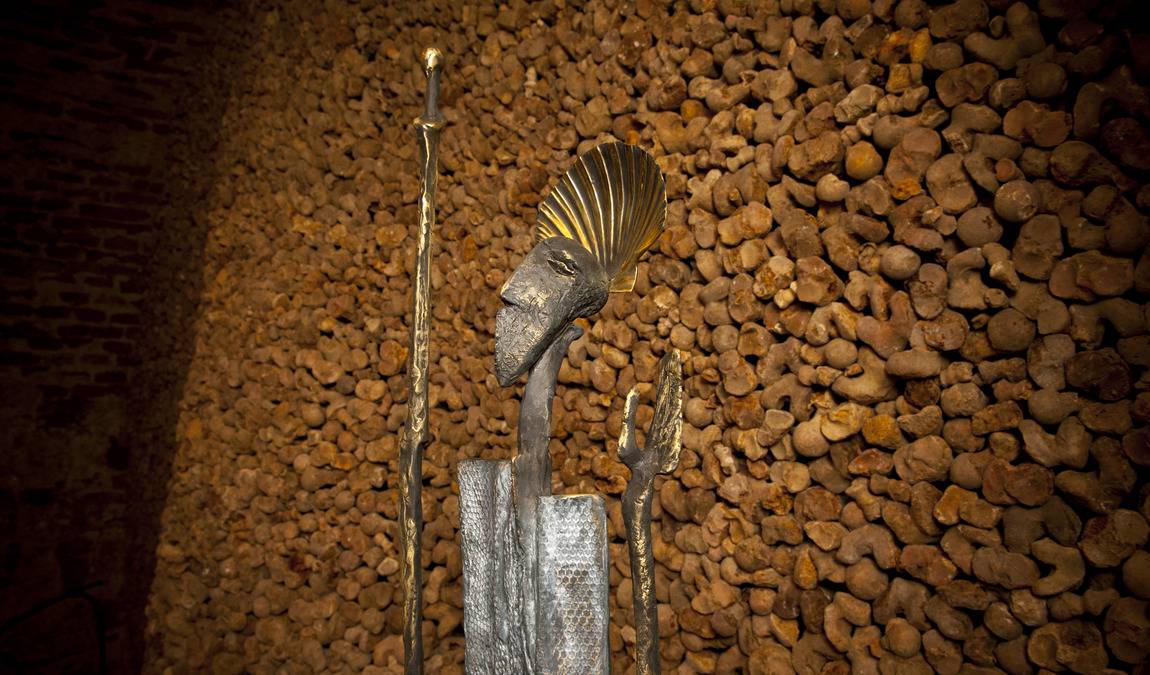 Photo: gotobrno.cz
Photo: gotobrno.cz
Visiting the Ossuary at the Church of St James in Brno can be an enriching experience that offers something different from the usual family outing. This underground site provides a mystical atmosphere that captivates the minds of curious young explorers.
- History Meets Mystery: Its walls are lined with bones. The Ossuary might initially sound macabre, but it is a gateway to the past. The carefully arranged skeletal remains introduce children to historical burial practices, making it a visually fascinating history lesson.
- Cultural Significance: Children of school and above tend to be mesmerized by the Ossuary's cultural resonance, where every skull and bone tells the story of the city's past residents, painting a picture of life and death over the centuries.
- Unique Educational Experience: They receive a respectful education on topics like the plague, cholera, and the Thirty Years' War, bringing textbook tales into stark reality.
Ossuary at the Church of St James is worth visiting with kids, especially those aged 10 and above, as they are old enough to appreciate the historical and educational aspects without being overwhelmed.
The Ossuary provides a memorable outing where kids can learn about European history firsthand, set against the backdrop of the Ossuary's silent sentinels. It's not just an outing — it's a conversation starter about history, life, and the memories we leave behind.
Historical Context
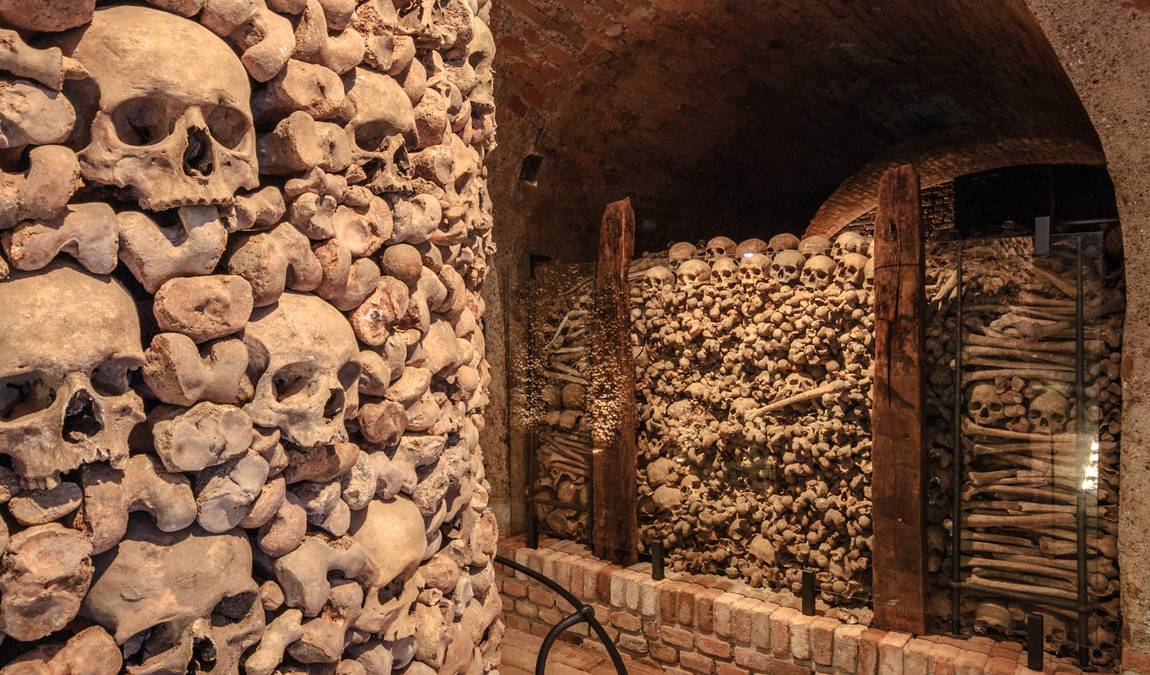 Photo: gotobrno.cz
Photo: gotobrno.cz
The Ossuary at the Church of St. James holds a captivating history entwined with the city of Brno's past, characterized by periods of significant epidemics and cultural evolution. This section invites families to explore the intriguing journey from its origins to its role during significant health crises and its enduring cultural importance.
The story of the St. James Ossuary began in the 13th century, with the burial ground at St. James Church in Brno serving the local community. By the 18th century, the cemetery's capacity was strained due to the increasing population and recurring epidemics. The Ossuary provided a solution for the overburdened burial spaces by serving as a final resting place for the bones exhumed from graves to make room for new interments. Lost to time, it was rediscovered in 2001, unveiling a significant historical treasure trove.
Major Epidemics
Like many European cities, Brno was not spared the wrath of infectious diseases through the centuries. The Ossuary's contents are, in many ways, a testament to the city's resilience through trying times. The plague ravaged Europe in several waves, with a noteworthy impact in the 14th century, while the 19th century saw devastation from cholera. These epidemics left a significant imprint on the population, and consequently, the Ossuary beneath St. James Church became a silent witness to these historical events.
Cultural Significance
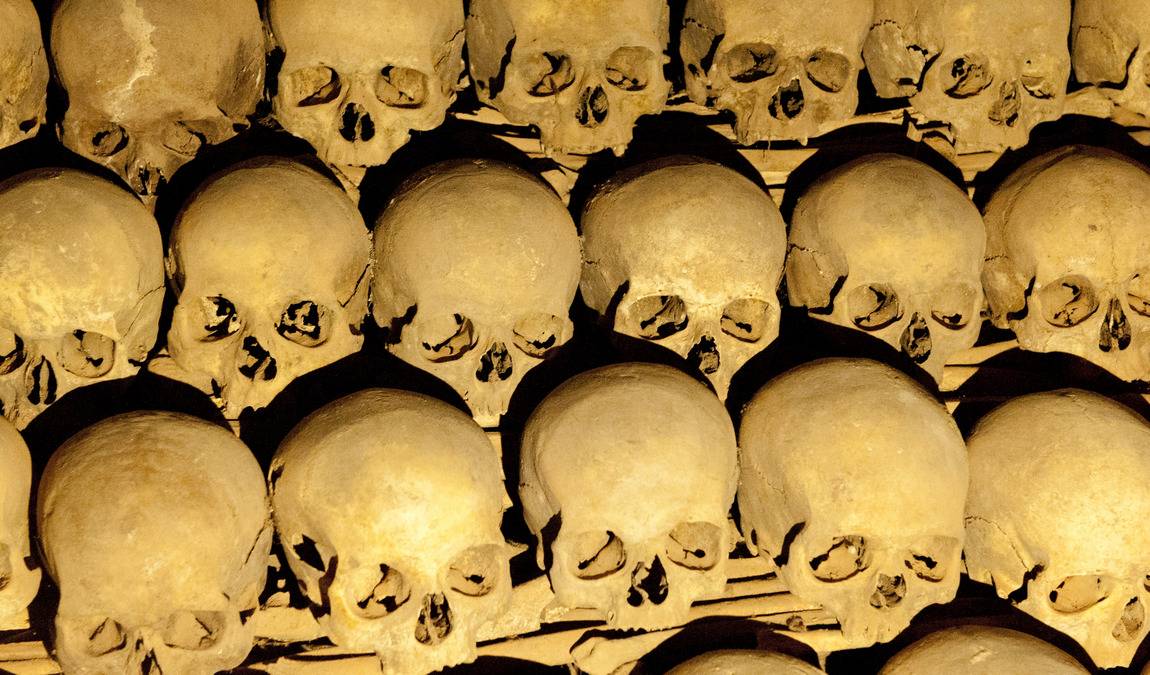 Photo: gotobrno.cz
Photo: gotobrno.cz
Beyond being a resting place for the departed, the St. James Ossuary is imbued with deep cultural significance. It represents an evocative chapter in the history of Brno, showcasing the customs and attitudes towards death and burial over centuries. The Ossuary connects to the past and serves as a poignant reminder of the city's historical journey, solidifying its place in the region's cultural tapestry.
Architecture and Structure
The Ossuary at the Church of St. James offers a remarkable example of how historical artistry can seamlessly blend with the somewhat macabre reality of medieval ossuaries. This space seamlessly combines reverence with the architectural mastery of a bygone era.
The Ossuary beneath St. James Church presents an underground labyrinth, where elegant arches and stonework frame the final resting place of over 50,000 individuals. True to the spirit of medieval ossuaries, the space is a potent historical artifact and a tribute to those who passed. Rows of skillfully arranged bones and skulls line the walls, creating patterns that speak to the Ossuary's dual role as both crypt and gallery. The underground network echoes the catacombs of old, yet the careful arrangement of remains is distinctly tied to the region's aesthetics.
Church of St. James
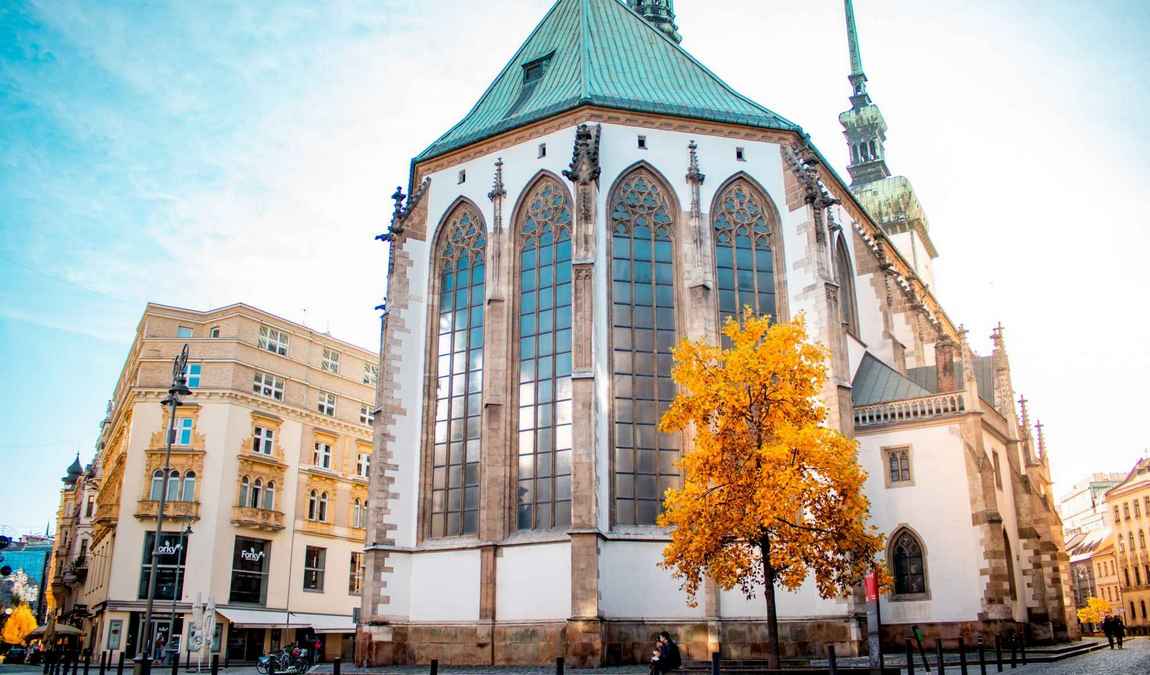 Photo: gotobrno.cz
Photo: gotobrno.cz
The Church of St. James is a late Gothic treasure in Brno's urbanscape. Its intimidating façade leads to an interior that boasts impressive vaults and meticulously crafted stonework. The church's architectural narrative unfolds through its intricate tracery windows, soaring pillars, and the delicate ribbed vaulting that crowns its sacred space. Not merely a backdrop for the Ossuary, the church offers its journey through medieval spirituality and design. Families will find both the Ossuary and the church's structure fascinating glimpses into history, preserved for modern eyes amidst the vibrancy of contemporary Brno.
Human Remains
Intriguing and solemn, the Ossuary at the Church of St James in Brno is a historical testament to the city's past inhabitants. Within its subterranean chambers lie the remains of thousands, providing visitors with a tangible connection to the lives that once were.
Types of Burials
The Ossuary houses skeletal remains transferred from graves to make room for new burials. Defined by the era's practices, it includes many individuals who succumbed to plagues and cholera. Notably, anthropological research confirms that these bones belong to people between the 13th and 17th centuries, marking Brno's history rather uniquely.
Skeletal Decorations
Skeletal decorations transform this resting place of bones into a thought-provoking site. These decorations serve not only as a form of memorial but also as art, with skulls and skeletons meticulously arranged to adorn the walls of the crypt. The arrangement echoes the traditions found in other European ossuaries while providing a direct and impactful reminder of the historical narratives tied to each bone.
Comparative Analysis
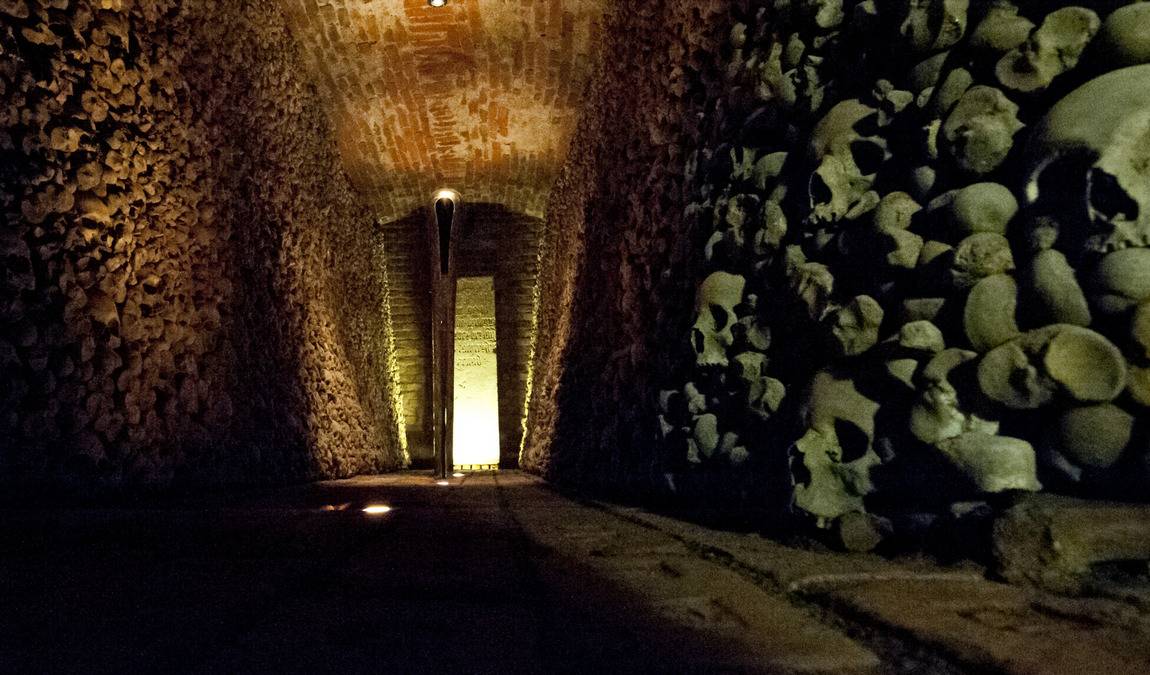 Photo: gotobrno.cz
Photo: gotobrno.cz
Ossuaries in Europe have a long tradition, often serving as final resting places during times when traditional burials were not viable due to space or health considerations. Other European ossuaries offer unique histories and attributes compared to the Brno Ossuary. Italy, for example, has several such sites, like the Capuchin Crypt in Rome with ornate chapels. However, none compare in size to the second-largest Ossuary in Europe, located in Brno, suggesting an exceptionally high number of fatalities due to events like plague and cholera and conflicts such as the Thirty Years' War.
The Catacombs of Paris dwarf most by comparison, not only in the sheer number of remains contained within but also in the extensive labyrinth of tunnels that form its network, stretching over hundreds of kilometers. They provide context to the Brno Ossuary, emphasizing the scale and societal pressures that led to these macabre yet significant historical archives under the streets of two of Europe's famed cities.
Preservation Efforts
Preserving the Ossuary at the Church of St. James is a testament to the meticulous efforts undertaken to maintain a historically significant site, combining respect for the past with present-day conservational practices.
Restoration and Maintenance
In 2001, a detailed survey of the land around the Church of St. James unveiled the long-forgotten Ossuary, prompting a renewed interest in its condition. Post-discovery, specialists have implemented different measures to preserve this underground area for future generations. Steps have included controlling the climate within the Ossuary to prevent further deterioration of the bones and the structure itself.
The Ossuary's restoration reflects a mindful approach. The focus has been sustaining the site's integrity while facilitating educational opportunities. It's an intricate balance of conserving the skeletal remains and the Ossuary's historical context, ensuring that families can appreciate the sacred significance and the historical chronicles etched into underground walls.
In the 18th century, Emperor Joseph II mandated reforms for hygienic reasons, transforming cemeteries across his empire. The bones were moved to ossuaries, like the one beneath St. James Church, to make room for new burials in existing graveyard plots. This history underpins the Ossuary's existence and frames today's maintenance efforts as a continuation of the past's dialogue with public health and urban planning.
Today, guardians of the Ossuary seek to preserve it not just as a tourist attraction but as a cultural heritage that bears witness to centuries of history, traditions, and transformations. Visitors, especially those with children, can traverse this historical site with the assurance that preservation efforts continue to make this a safe and fascinating journey into history.
Surrounding Landmarks
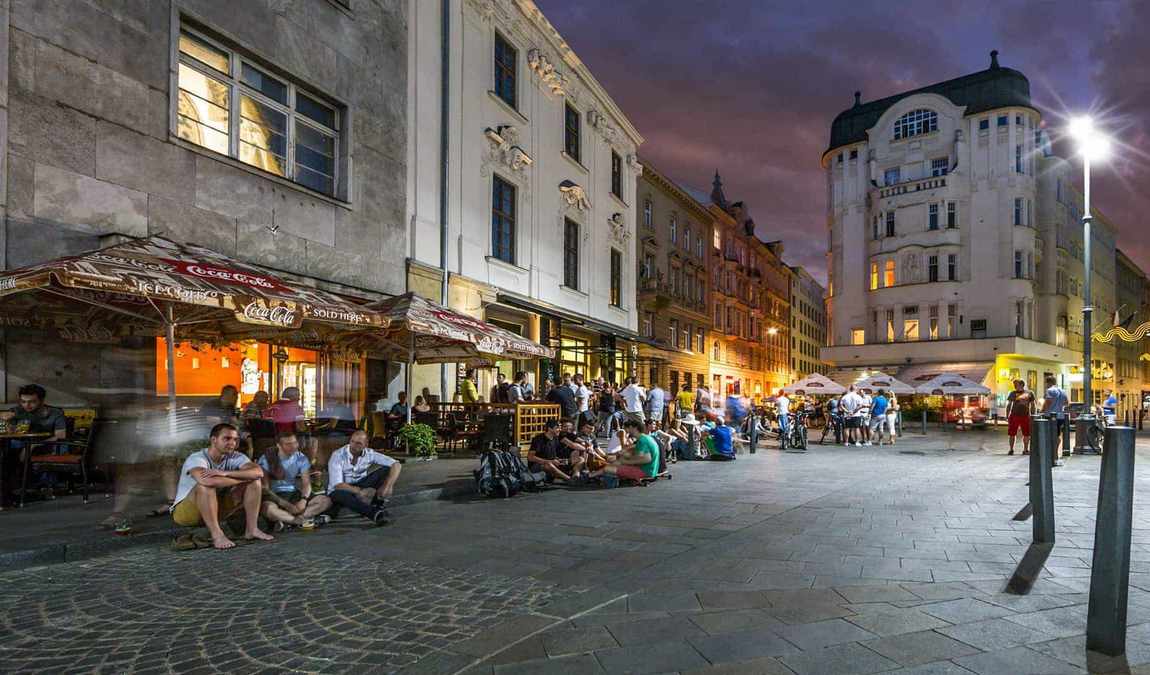 Photo: gotobrno.cz
Photo: gotobrno.cz
Visitors to the Ossuary at the Church of St. James are treated to more than just an exploration of history hidden beneath their feet. The Ossuary is in the heart of Brno, surrounded by many other noteworthy sites perfect for families looking to immerse themselves in the local culture and history.
Nearby Attractions
- Jakubské Náměstí: Just above the ossuary, the square known as Jakubské náměstí offers a charming area for strolls and a picturesque setting for capturing memories of Brno.
- Cathedral of St Peter and Paul: A short walk approximately 600 meters from the Ossuary lies the magnificent Cathedral of St Peter and Paul. This national cultural landmark dominates the skyline at Petrov Hill. The cathedral is a testament to Brno's architectural splendor and offers a serene environment for reflection.
- Špilberk Castle: Families can venture to Špilberk Castle, a historic fortress now serving as a museum and park. The castle's hilltop location provides stunning panoramic views of Brno, making it an ideal backdrop for family photos.
- Old Town Hall: The nearby Old Town Hall, with its storied history and captivating architecture, invites visitors to discover Brno's past governance and the legend of the Brno dragon.
- Náměstí Svobody: Brno's main square, Náměstí Svobody, is a dynamic center of activity. Families can experience local street performances, seasonal markets, and the iconic astronomical clock here.
- Vegetable Market: Not far from the Ossuary, the Vegetable Market is more than just a place to shop for fresh produce. It's a vibrant space where children can enjoy the colors and scents of local offerings, with an underground labyrinth to explore.
Best Time to Visit
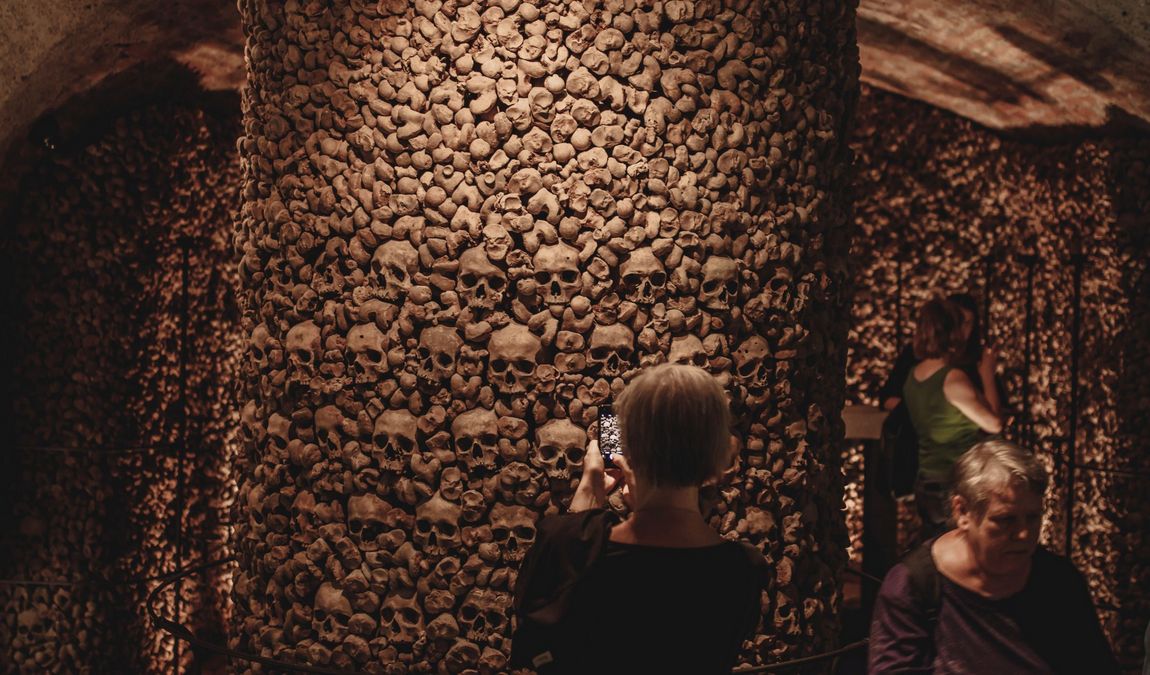 Photo: gotobrno.cz
Photo: gotobrno.cz
Visiting the Ossuary of St. James can be a fascinating experience for families interested in history and architecture. However, given its sad nature, it's crucial to consider the timing to ensure a comfortable and respectful visit with children.
Days of the Week:
Tuesday to Sunday are the optimal days to explore the Ossuary. Mondays are reserved for silence, as the Ossuary is closed.
Time of Day:
Morning visits are advisable, particularly soon after opening at 9:30 a.m. It allows families to avoid larger crowds and engage more with the site. Afternoons, close to the closing time at 6:00 p.m., tend to be busier and may not provide the same intimate experience.
Seasonal Timing:
Spring and Autumn present a mild and pleasant climate, conducive to a day of exploration in Brno. Summer might be busier with tourists, so planning a visit earlier in the day during this season is beneficial.
Families may consider a mid-week visit for quiet reflection and to avoid the peak tourist hours. It affords the dual advantage of a more personal encounter with history and the chance to absorb the gravity of the place without the weekend bustle. Being one of the largest ossuaries in Europe, an off-peak visit ensures that the family can appreciate the site's intriguing details and somber beauty at a peaceful pace.
How Long Does It Take to Attend?
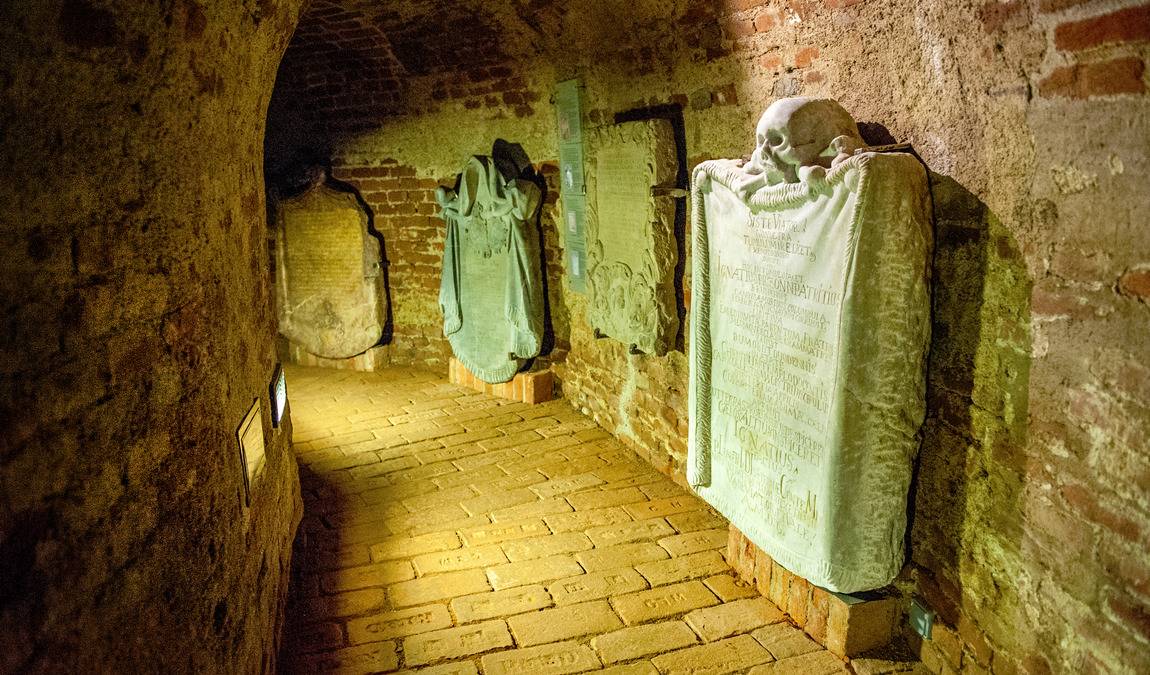 Photo: gotobrno.cz
Photo: gotobrno.cz
Visiting the Ossuary at the Church of St. James is an intriguing experience for families, offering a glimpse into a uniquely historic site in Brno. The question many visitors have is: how much time should they set aside to appreciate this second-largest Ossuary in Europe fully?
A tour of this storied location is typically a brief yet immersive experience. On average, families can expect to spend around 30-45 minutes exploring the captivating underground chambers. This duration is manageable for visitors of all ages, including young children with limited attention spans.
It's advisable to arrive earlier, especially during peak visiting hours, to allow for potential waiting times. There's ample time to observe the Ossuary's intricate details and ponder the historical narratives held within its walls.
When planning the visit, families must note that certain etiquette is expected to be a space of reverence and historical significance. It fosters a respectful atmosphere conducive to a reflective and meaningful experience.
Is Ossuary at the Church of St James Worth Visiting?
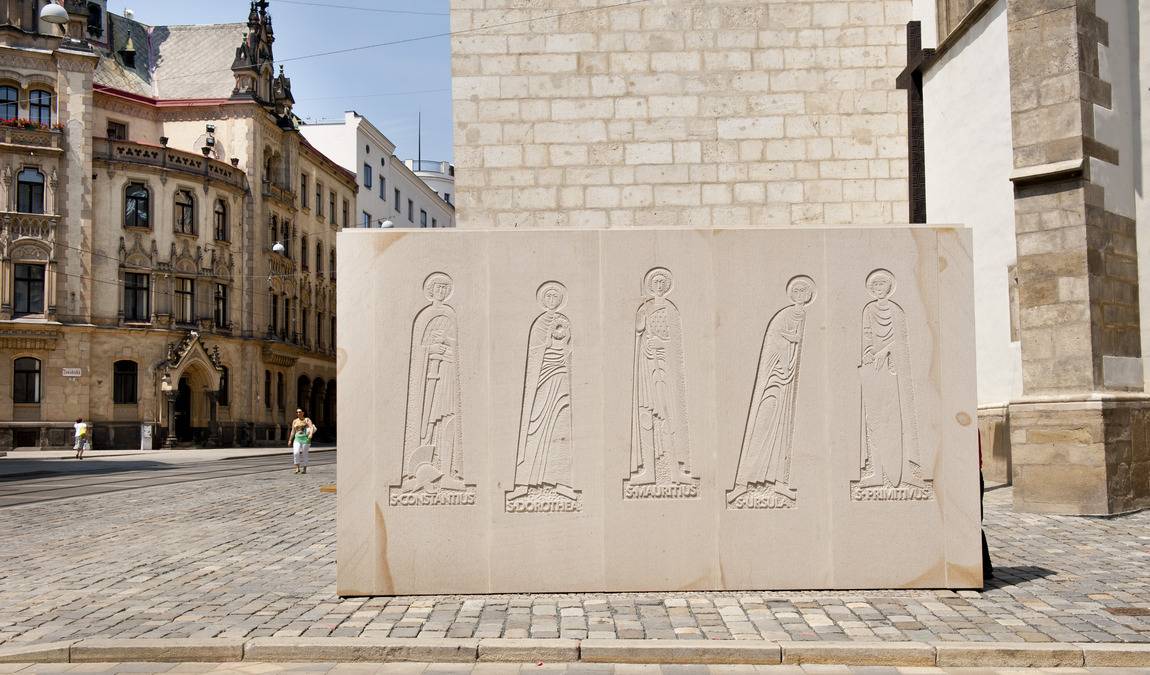 Photo: gotobrno.cz
Photo: gotobrno.cz
Brno's Ossuary is a mesmerizing historical site that provides an exceptional journey into the past. Families looking to enrich their travel with educational content will find the Ossuary a captivating destination.
Its uniqueness lies in its storied bones of over 50,000 individuals, revealing tales of the city's history affected by wars, famines, and plagues. Children and adults alike can glean insights into the cultural and historical significance of the site. Moreover, the Ossuary's careful preservation and presentation allow a respectful yet utterly fascinating exploration.
Reasons to visit Ossuary at the Church of St James include its educational value, the awe-inspiring scale of the collection, and the fact that it's a safe and contemplative environment for families. Through the visual display of history, children can gain a deeper understanding of the city's past while parents appreciate the significance of this cultural landmark.
Ossuary at the Church of St. James is worth visiting for the historical enlightenment, a rare opportunity to witness such a remarkable collection, and the chance to inspire a love of history in young minds.
Encounter a profound part of Brno's heritage and consider including Ossuary at the Church of St James in your family's travel itinerary. It's not just a visit; it's an educational adventure in Europe's heart.











